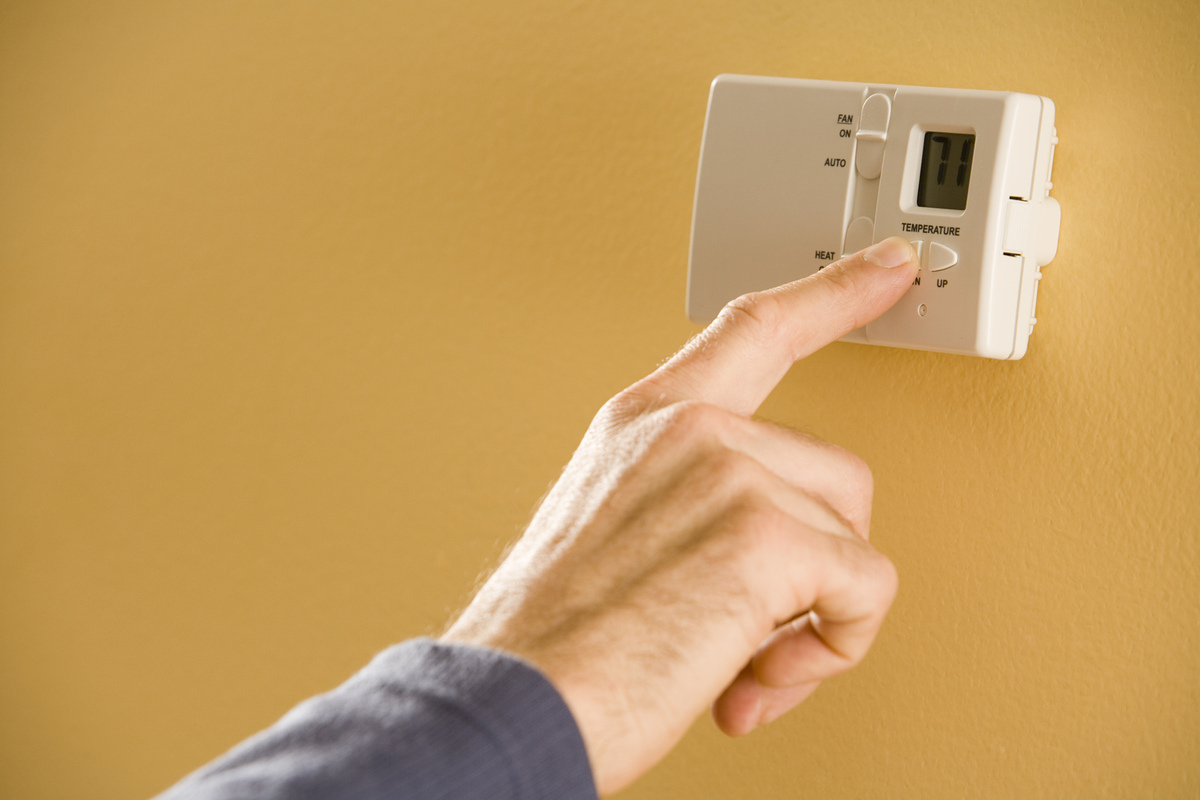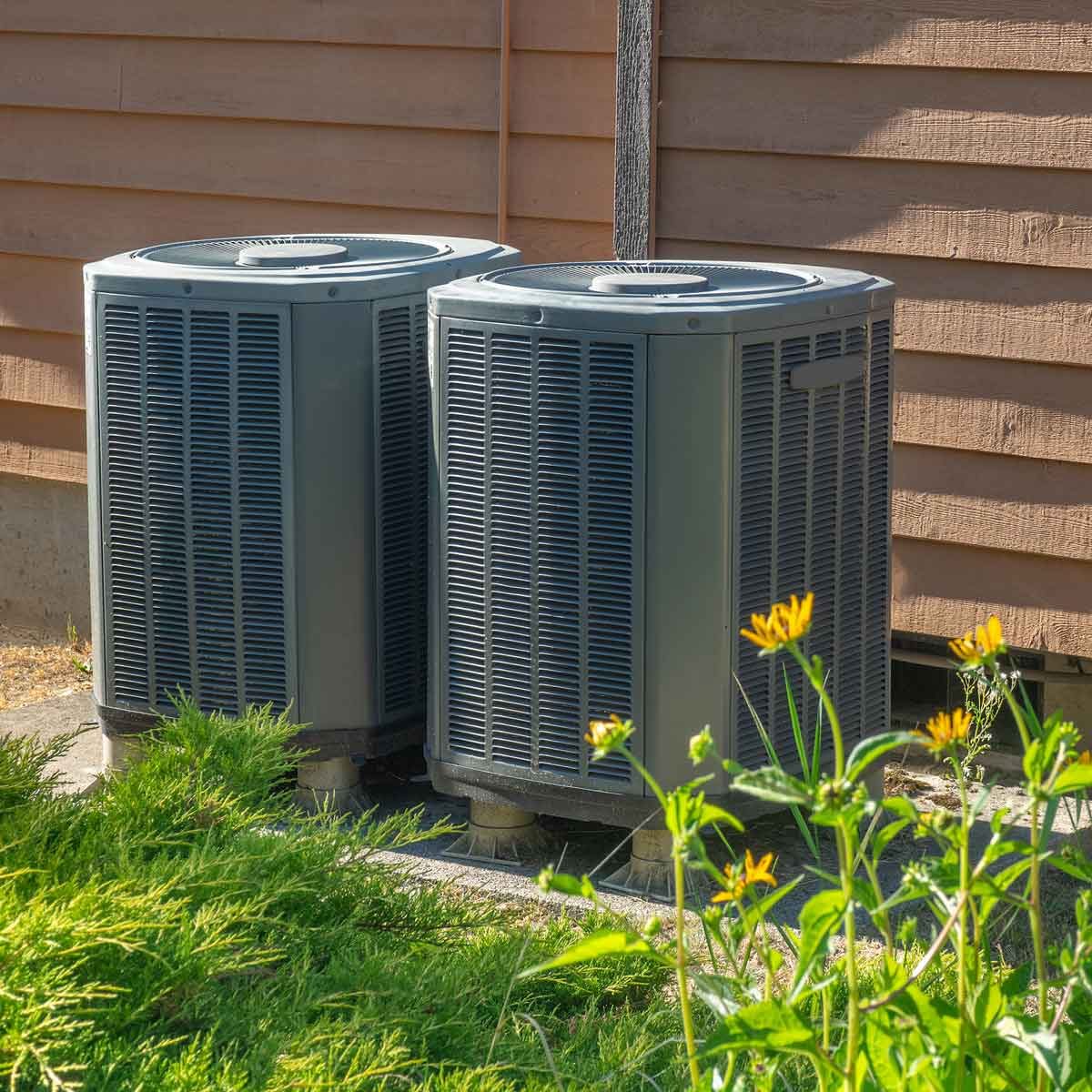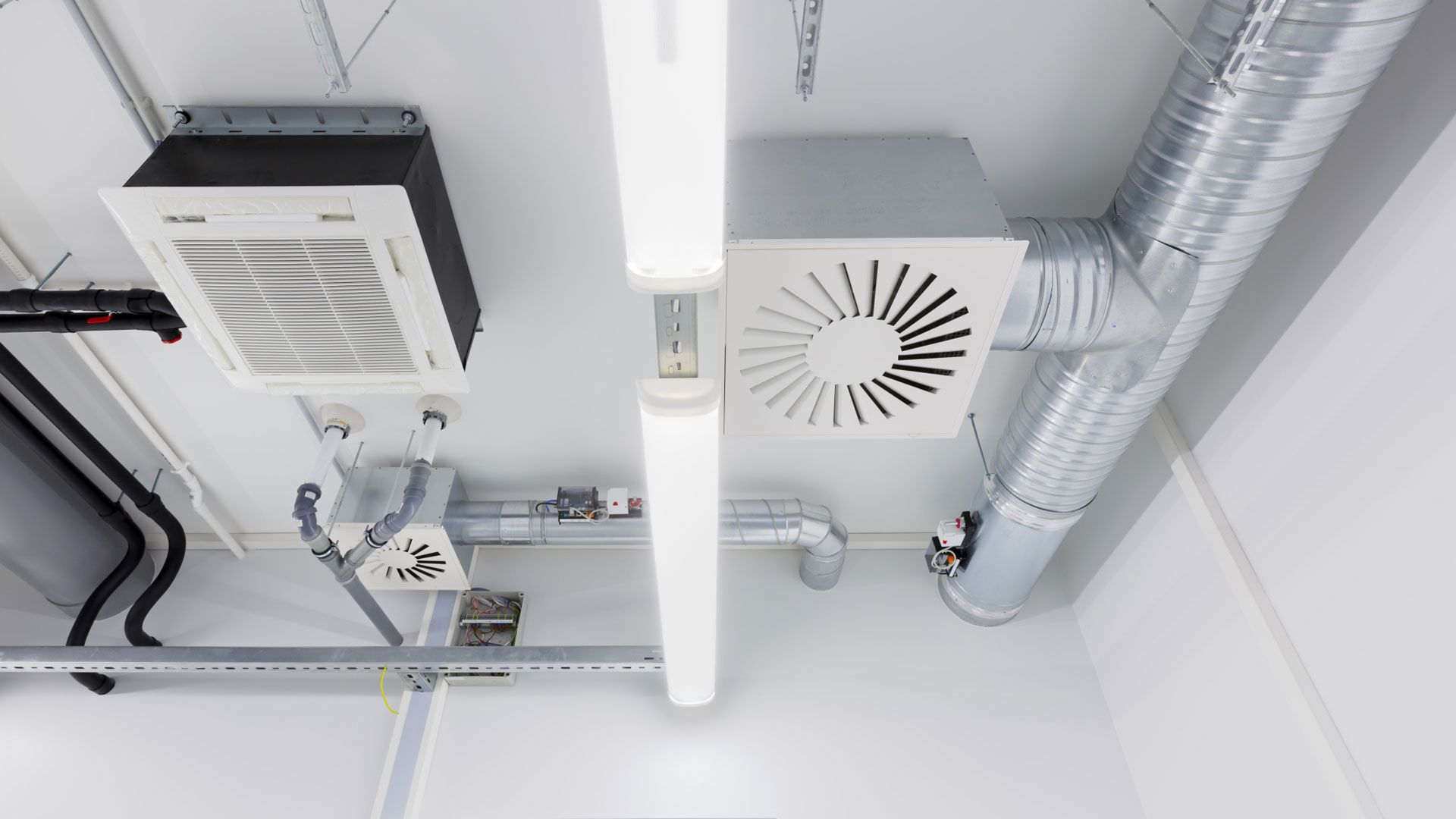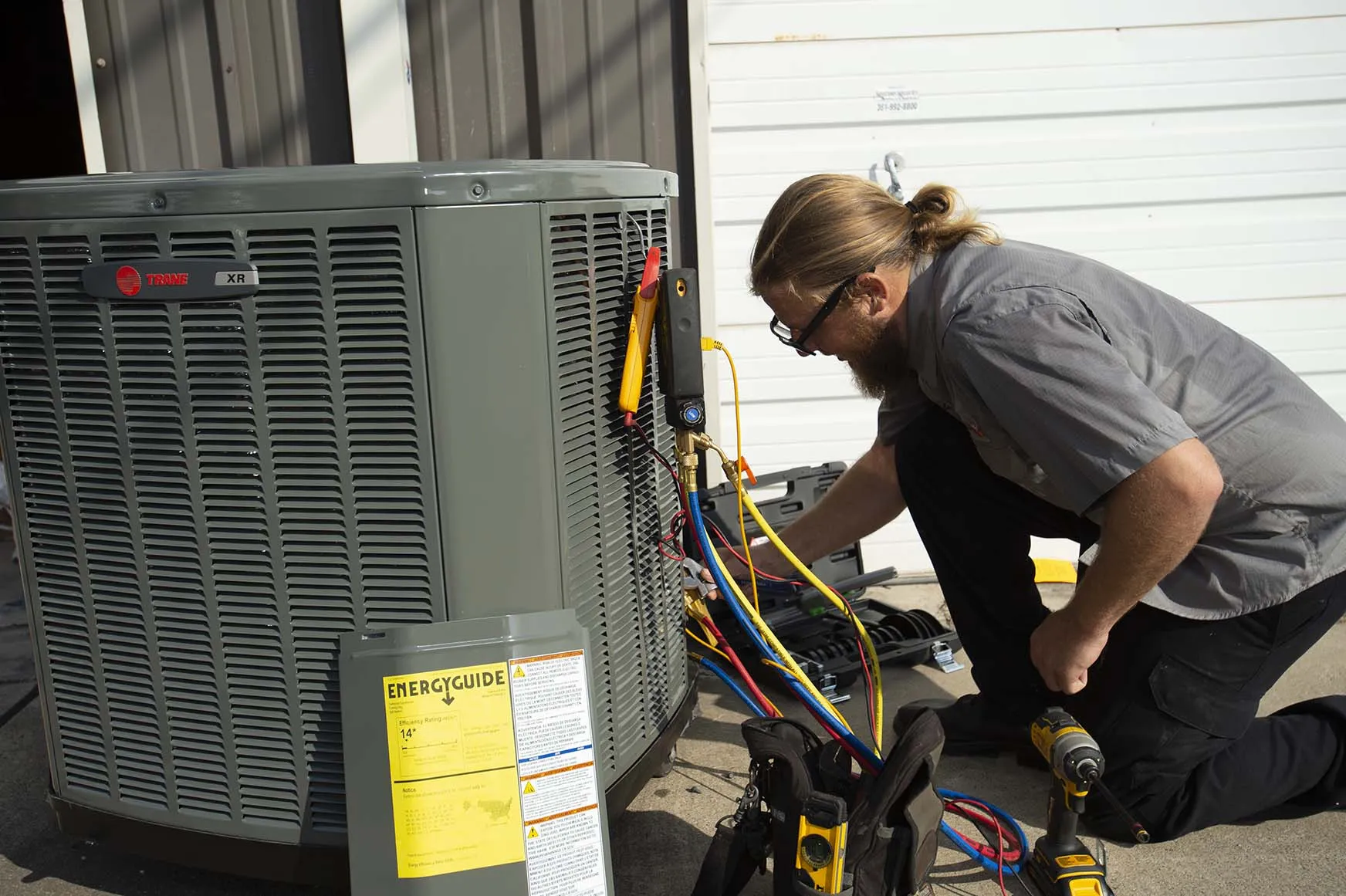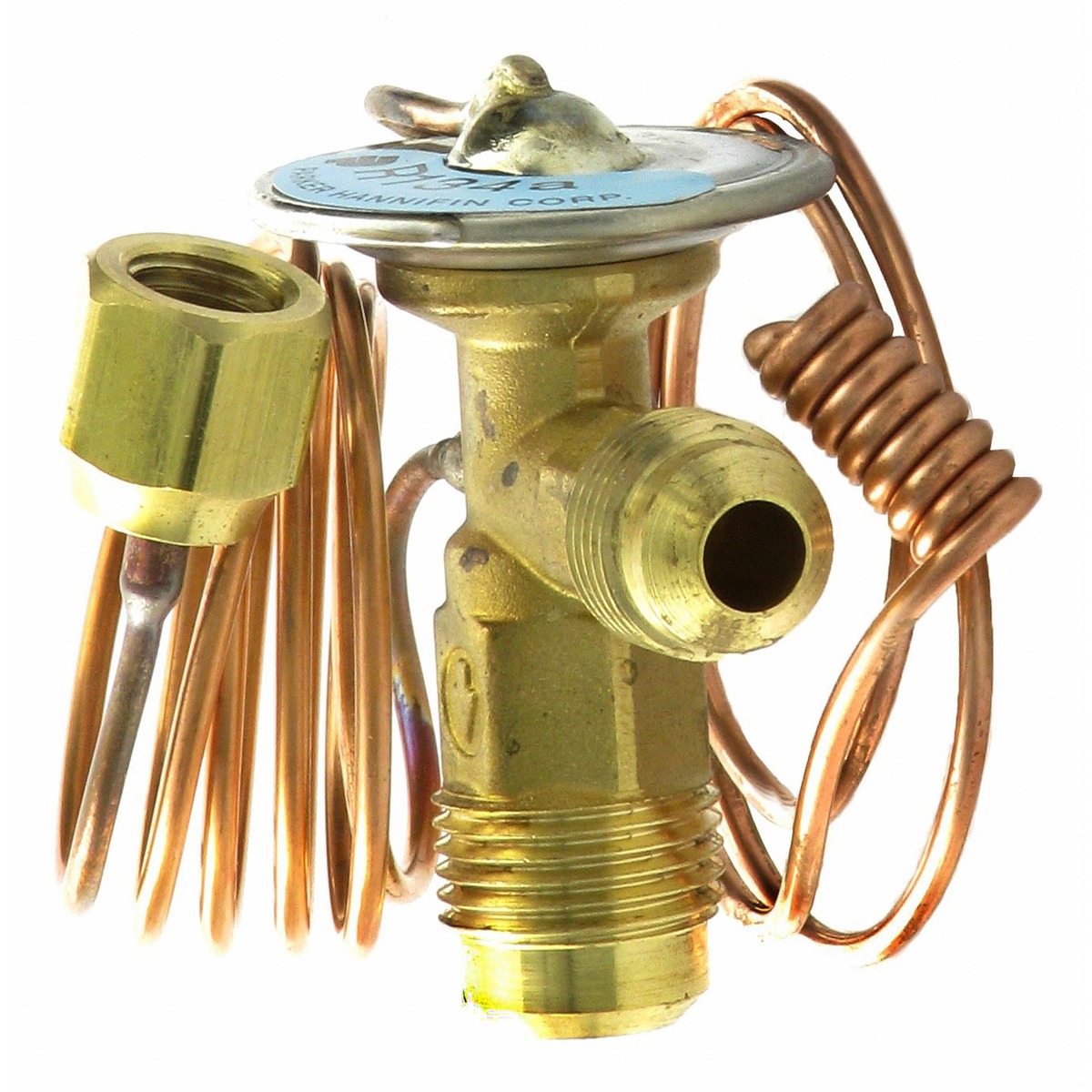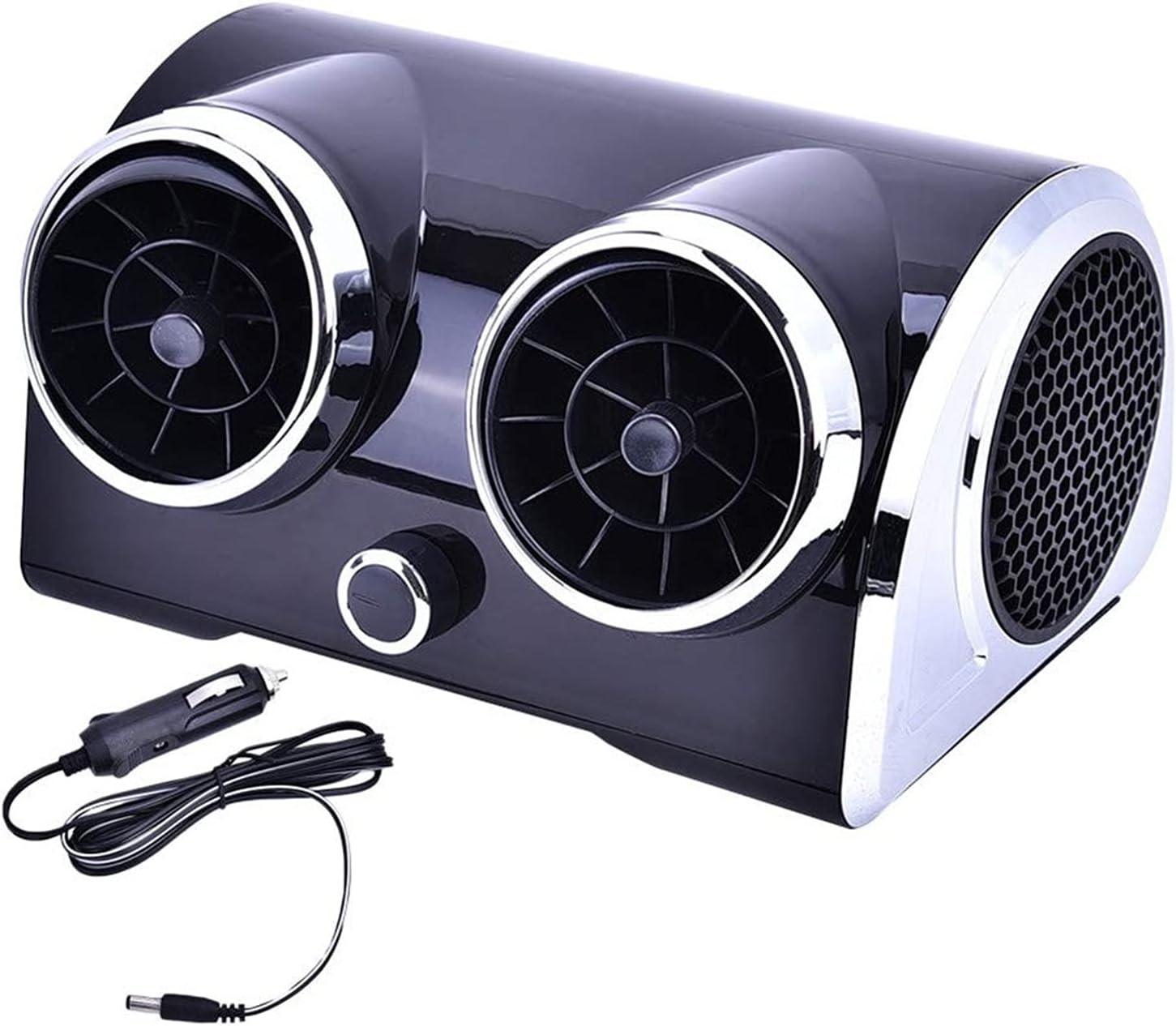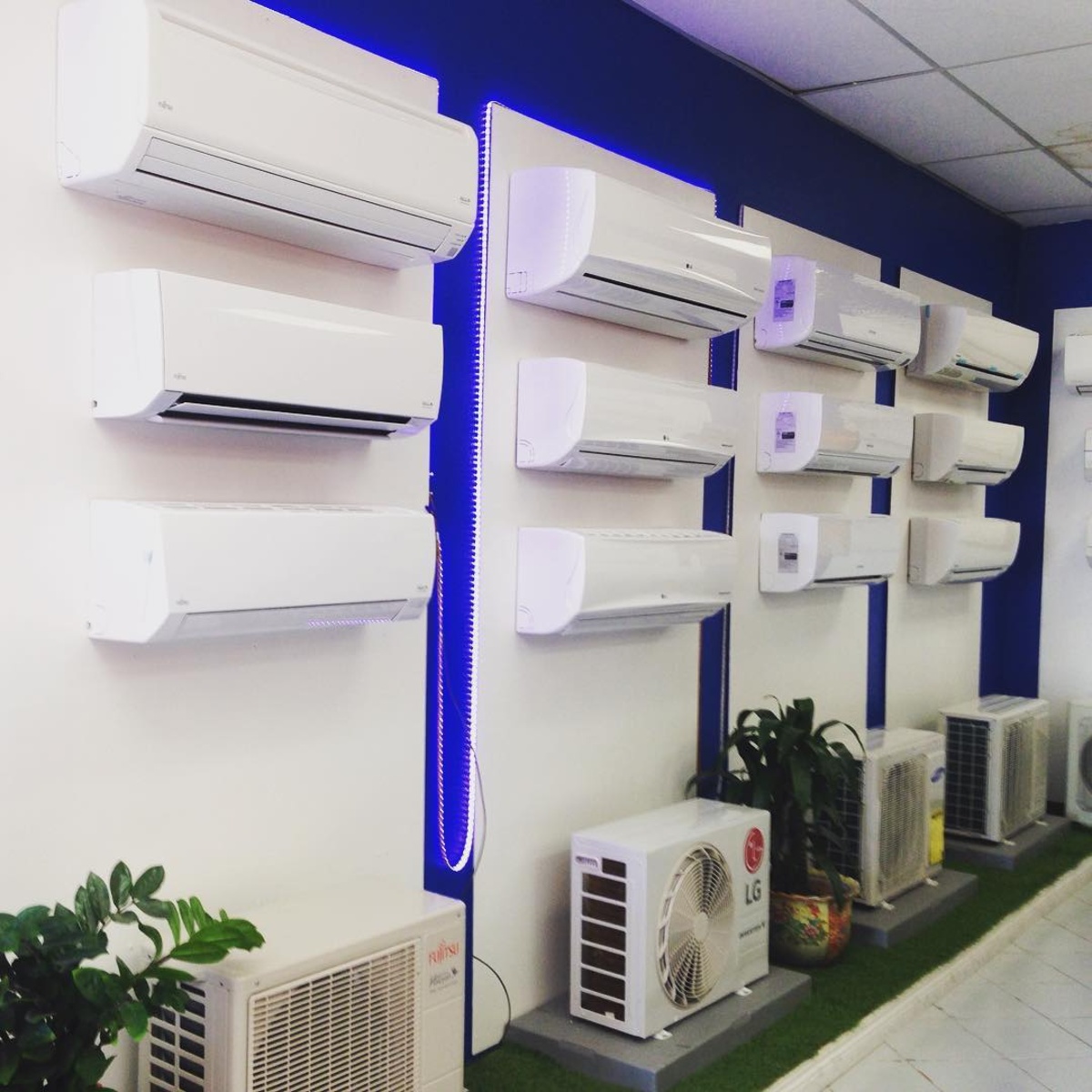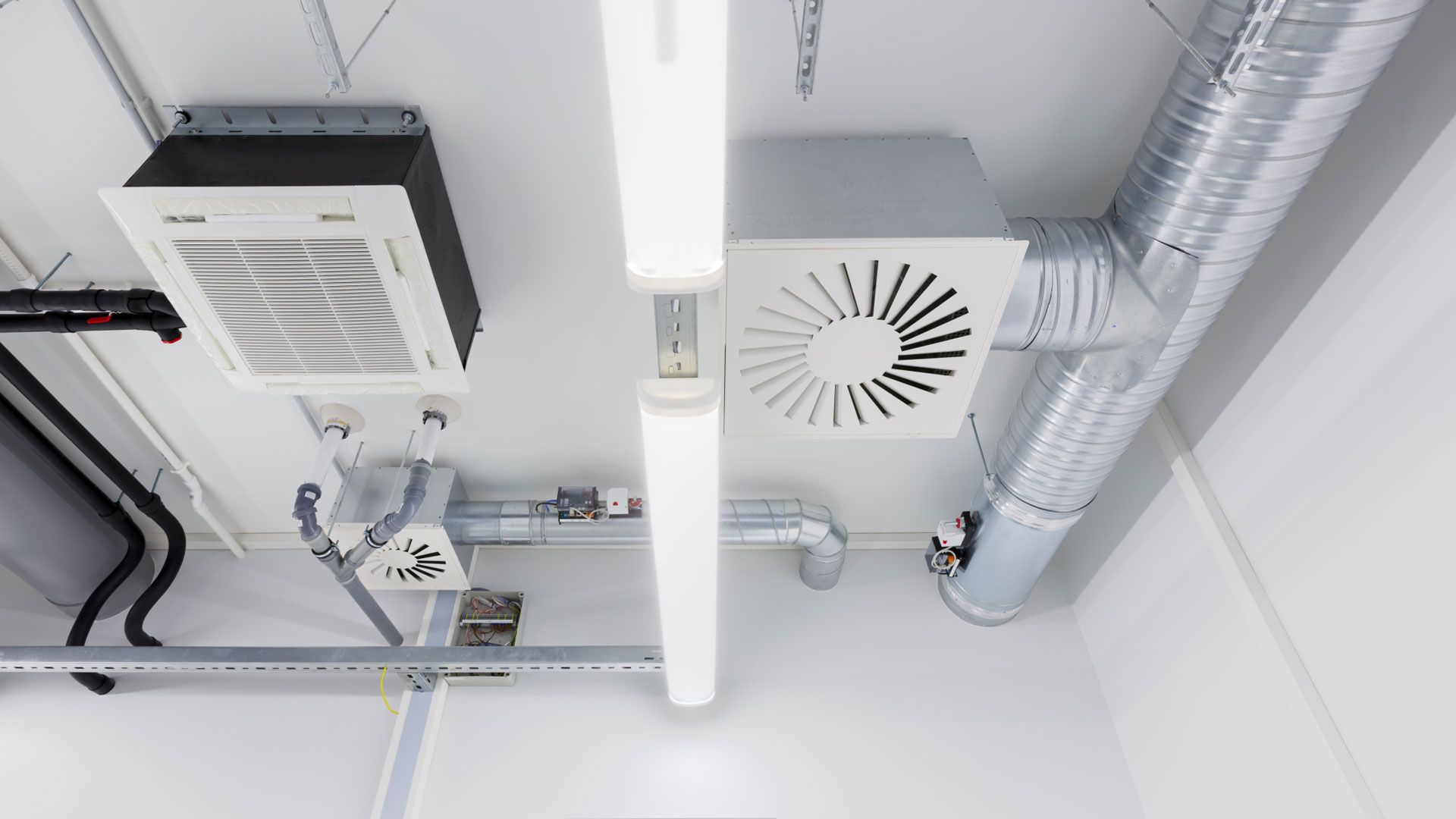Home>Home Maintenance>What Is A Register In Air Conditioning
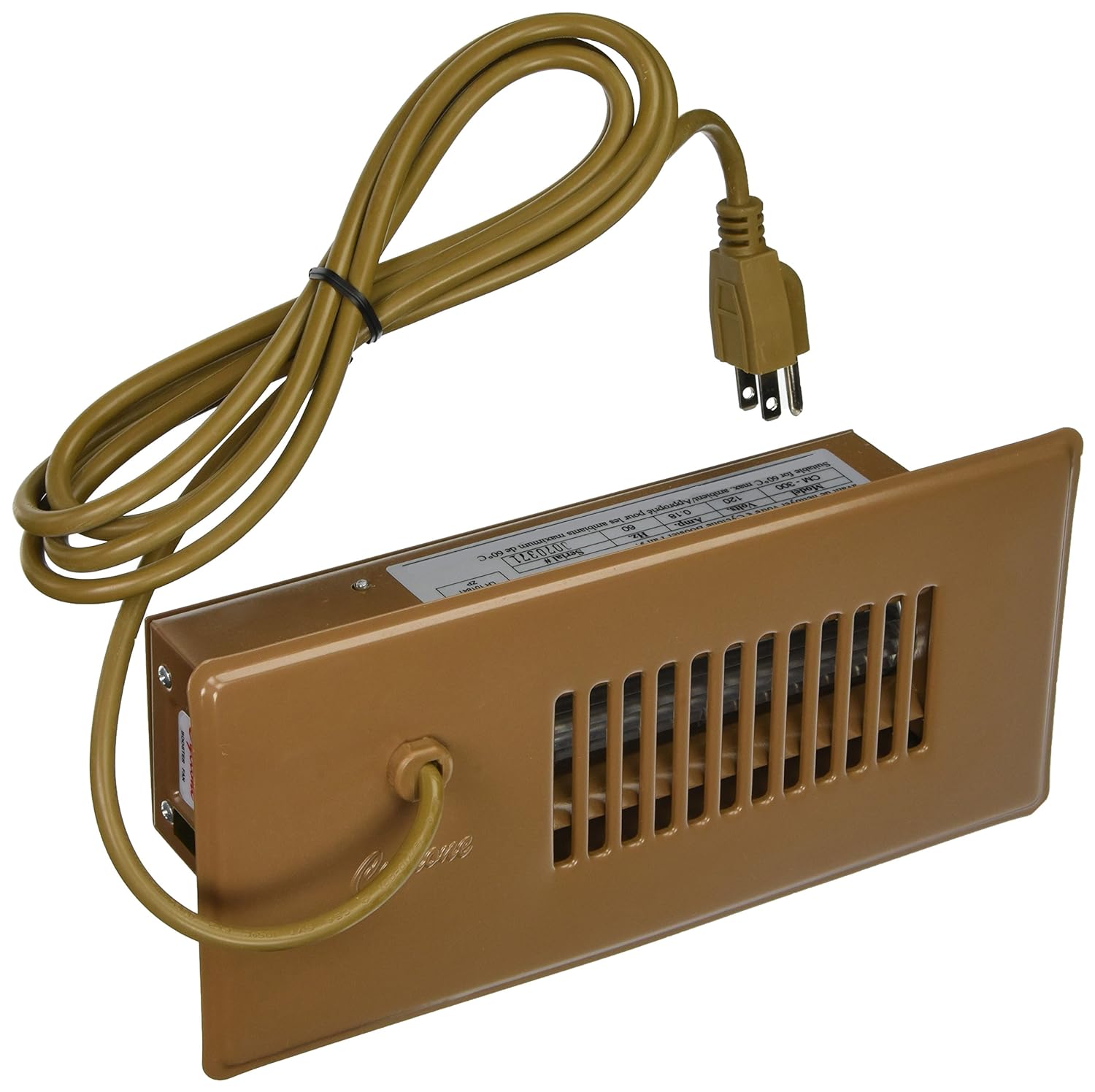

Home Maintenance
What Is A Register In Air Conditioning
Modified: March 6, 2024
Learn about registers in air conditioning and their importance in home maintenance. Discover how they help control airflow and temperature for a comfortable indoor environment
(Many of the links in this article redirect to a specific reviewed product. Your purchase of these products through affiliate links helps to generate commission for Storables.com, at no extra cost. Learn more)
Introduction
Welcome to the world of home maintenance! When it comes to keeping your living space comfortable and enjoyable, proper air conditioning is key. One crucial component of any air conditioning system is the register. While often overlooked, registers play a vital role in ensuring efficient airflow and maintaining optimal indoor temperatures.
In this article, we will delve deeper into the world of registers in air conditioning. We will explore their definition, purpose, types, components, installation, and maintenance. By the end, you will have a comprehensive understanding of registers and how they contribute to a well-functioning cooling system in your home.
So, let’s get started by understanding the basic concept of a register.
Key Takeaways:
- Registers are essential for controlling airflow in your home. They help maintain comfortable temperatures, prevent hot or cold spots, and save energy by directing conditioned air where it’s needed most.
- Proper maintenance and cleaning of registers are crucial for efficient air conditioning. Regular dusting, vacuuming, and professional maintenance ensure optimal airflow and consistent comfort throughout your home.
Read more: What Is Air Conditioning
Definition of a Register in Air Conditioning
A register in air conditioning refers to a device that controls and directs the flow of air from the cooling system into a living space. It is an essential part of the HVAC (Heating, Ventilation, and Air Conditioning) system, ensuring that conditioned air is distributed evenly throughout the rooms in your home.
The register is typically mounted on walls, floors, ceilings, or baseboards, allowing the conditioned air to enter the room with precision. It consists of a faceplate, adjustable blades, louvers, and dampers, which work together to regulate the direction and velocity of the airflow. These components can be adjusted to control the air supply and distribution, providing individualized comfort for each occupant.
Registers are commonly confused with grilles or diffusers, which are similar in appearance but serve slightly different purposes. While grilles and diffusers also help distribute air, they often lack adjustable blades or dampers, making registers more versatile in controlling the airflow.
Now that we have a solid understanding of what a register is, let’s explore its main purpose in air conditioning systems.
Purpose of Registers
The primary purpose of registers in air conditioning systems is to control the flow and direction of conditioned air into living spaces. They play a crucial role in achieving a comfortable indoor climate by ensuring efficient airflow and temperature regulation. Here are the key purposes of registers:
- Air distribution: Registers are responsible for distributing conditioned air from the HVAC system evenly throughout the room. By regulating the airflow, registers prevent hot or cold spots, ensuring a consistent temperature in your living space.
- Air direction: Registers can be adjusted to direct the airflow in a specific direction. This allows you to customize the airflow based on your preferences and room layout. For example, you can adjust the blades to direct cool air towards seating areas or away from draft-sensitive areas.
- Temperature control: Registers help regulate the temperature in different areas of your home. By adjusting the airflow and directing it where it’s needed most, you can achieve efficient cooling and maintain comfortable temperatures throughout the space.
- Comfort customization: Every individual has different comfort preferences. Registers provide the flexibility to customize the airflow in each room, allowing occupants to create their desired level of comfort. This versatility ensures that everyone in the household can enjoy a personalized and enjoyable indoor environment.
- Energy efficiency: Properly designed and positioned registers can contribute to energy savings by optimizing the airflow and reducing the workload on the HVAC system. By directing the conditioned air efficiently, the system can operate more effectively, resulting in lower energy consumption and reduced utility bills.
Overall, registers are essential components in air conditioning systems that contribute to achieving optimal indoor comfort, energy efficiency, and even distribution of conditioned air. Now that we understand the purpose of registers, let’s explore the different types available for different installation locations.
Types of Registers
Registers come in various types, each designed to suit specific installation locations and aesthetic preferences. Let’s take a closer look at the different types of registers commonly used in air conditioning systems:
- Wall Registers: Wall registers are the most common type and are typically installed on interior walls. They feature a faceplate with adjustable blades and can be adjusted to control the direction and velocity of the airflow. Wall registers are available in various sizes and designs to seamlessly blend in with your decor.
- Floor Registers: Floor registers, as the name suggests, are designed to be mounted on the floor. They are ideal for heating systems or when your air conditioning system is located below the floor. Floor registers are sturdy and can withstand foot traffic, making them a practical choice for high-traffic areas.
- Ceiling Registers: Ceiling registers are installed in the ceiling and are an excellent choice for spaces with limited wall space. They provide a discreet airflow solution and can be adjusted to direct the air downward or in different directions. Ceiling registers can be particularly useful in rooms with high ceilings or open-concept spaces.
- Baseboard Registers: Baseboard registers are designed to be installed along the baseboard or lower portion of the wall. They are often used in older homes with hot water radiators but can also be adapted for air conditioning systems. Baseboard registers provide a low-profile aesthetic and distribute air at a lower level, making them ideal for efficient heating and cooling.
These are the main types of registers commonly used in air conditioning systems. It’s important to choose the appropriate register type based on installation location, functionality, and aesthetic considerations. Now let’s explore the components that make up a register.
Types of Registers
Read more: What Is Automatic Air Conditioning
Wall Registers
Wall registers are the most common type of registers used in air conditioning systems. They are designed to be mounted on interior walls and play a crucial role in directing and distributing conditioned air throughout the room. Here are some key features and benefits of wall registers:
- Adjustable Blades: Wall registers typically have adjustable blades that allow you to control the direction and angle of the airflow. This feature enables you to customize the air distribution based on your comfort preferences and room layout.
- Various Sizes and Designs: Wall registers are available in a wide range of sizes and designs to suit different room aesthetics and airflow requirements. You can choose from different materials, finishes, and patterns to seamlessly blend the registers with your interior decor.
- Maximum Airflow Control: Wall registers provide effective control over the volume and velocity of the conditioned air entering the room. By adjusting the blades, you can increase or decrease the airflow, ensuring optimal comfort and temperature regulation.
- Easy Installation and Maintenance: Wall registers are relatively simple to install and maintain. They can easily be mounted on the wall using screws or clips. Regular cleaning, including dusting and vacuuming, is essential to maintain the integrity of the airflow and prevent obstruction.
- Versatile Application: Wall registers can be installed in various areas of the home, including living rooms, bedrooms, offices, and kitchens. They are suitable for both residential and commercial spaces and can be used with central air conditioning systems, HVAC systems, or heat pumps.
- Even Air Distribution: Properly positioned wall registers promote uniform air distribution throughout the room, preventing hot or cold spots. It allows the conditioned air to reach every corner of the space, ensuring optimal comfort levels for all occupants.
Wall registers are a popular choice due to their versatility, functionality, and aesthetic appeal. They are an essential component of any air conditioning system, ensuring efficient airflow and maintaining a comfortable living environment.
Now that we’ve explored wall registers, let’s move on to the other types of registers commonly used in air conditioning systems.
Types of Registers
Floor Registers
Floor registers are a specific type of register designed to be mounted on the floor. They are commonly used in heating systems or in air conditioning systems where the ductwork is located beneath the floor. Here are some key features and benefits of floor registers:
- Sturdy Construction: Floor registers are built to withstand foot traffic and heavy objects. They are typically made of durable materials like steel or aluminum, ensuring longevity and durability.
- Customizable Airflow: Similar to other types of registers, floor registers feature adjustable blades that allow you to control the direction and flow of the air. This enables you to customize the air distribution to suit your preferences.
- Seamless Integration: Floor registers are designed to blend seamlessly into the floor. They often feature a flush or low-profile design, preventing any tripping hazards or obstructions.
- Efficient Heating and Cooling: By being positioned on the floor, floor registers can effectively distribute heated or cooled air across the room from a lower level. This helps to achieve efficient heating and cooling while maintaining a comfortable indoor environment.
- Compatibility with Different Flooring Types: Floor registers can be installed in various types of flooring including hardwood, carpet, tile, or laminate. They can be adjusted to accommodate different thicknesses of flooring, ensuring a secure and tight fit.
- Support for Large Air Volumes: Due to their larger size compared to wall or ceiling registers, floor registers have the capacity to accommodate larger air volumes. This makes them ideal for areas in your home that require a higher flow of conditioned air.
Floor registers provide a practical and aesthetically pleasing solution for air distribution in spaces where your ductwork is located below the floor. They are designed to not only efficiently distribute air but also withstand the wear and tear of daily foot traffic.
Now that we’ve explored floor registers, let’s move on to the other types of registers commonly used in air conditioning systems.
Types of Registers
Read more: What Is The Purpose Of Air Conditioning
Ceiling Registers
Ceiling registers, as the name implies, are registers that are installed in the ceiling of a room. They are often used in spaces where wall installation is not feasible or where a more discreet airflow solution is desired. Here are some key features and benefits of ceiling registers:
- Discreet Air Distribution: Ceiling registers provide a discreet and hidden air distribution solution, as they are mounted flush with the ceiling. This makes them a popular choice for spaces where aesthetics are important, such as living rooms, bedrooms, or offices.
- Effective Airflow Direction: Ceiling registers can be adjusted to direct the airflow in different directions. This allows the conditioned air to be evenly distributed throughout the room, preventing uneven temperatures and ensuring optimal comfort.
- Space-Saving: By installing registers in the ceiling, you can free up valuable wall space, making it easier to arrange furniture or hang decorations. This is particularly advantageous in rooms with limited wall space, such as small bedrooms or compact living areas.
- Suitable for High Ceilings: Ceiling registers are an ideal choice for rooms with high ceilings, where using wall registers may lead to an inefficient distribution of air. By positioning the registers in the ceiling, the conditioned air is directed downward, effectively reaching occupants at a lower level.
- Minimal Maintenance: Ceiling registers are relatively low-maintenance compared to other types. As they are mounted flush with the ceiling, they are less prone to dust or debris accumulation. Occasional cleaning and dusting will help maintain optimal airflow and prevent blockage.
- Uniform Air Distribution: Properly placed ceiling registers ensure uniform air distribution across the room, helping to maintain a consistent temperature throughout the space. This eliminates hot or cold spots and provides a comfortable living environment.
Ceiling registers offer a practical and aesthetically pleasing solution for air distribution in rooms where wall mounting may not be suitable. They provide efficient and even airflow distribution, making them an excellent choice for various residential or commercial applications.
Now that we’ve explored ceiling registers, let’s move on to the final type of register commonly used in air conditioning systems.
Types of Registers
Baseboard Registers
Baseboard registers are registers specifically designed to be installed along the baseboard or lower portion of the wall. They are commonly used in homes with hot water radiators but can also be used with air conditioning systems. Here are some key features and benefits of baseboard registers:
- Low-Profile Design: Baseboard registers have a low-profile design that seamlessly blends with the baseboard, providing a clean and unobtrusive look in the room.
- Efficient Heating and Cooling Solution: Baseboard registers are strategically placed near the floor, allowing them to efficiently distribute heated or cooled air along the baseboard. This helps to optimize temperature distribution and provide consistent comfort throughout the room.
- Adjustable Blades for Air Direction: Similar to other types of registers, baseboard registers feature adjustable blades that can be angled to direct the airflow in the desired direction. This allows for customized air distribution based on the room layout and personal preferences.
- Compatibility with Radiators: Baseboard registers are commonly used in homes with hot water radiators. These registers replace the standard radiator cover, allowing the air conditioning system to provide both heating and cooling capabilities.
- Energy Efficiency: By efficiently distributing conditioned air at a lower level, baseboard registers can contribute to energy savings. The heated or cooled air is directed closer to the occupant level, reducing the need for excessive heating or cooling.
- Easy Installation and Maintenance: Installing baseboard registers is relatively simple and typically involves screwing them into the baseboard. Regular cleaning and maintenance are necessary to prevent dust accumulation and ensure unimpeded airflow.
Baseboard registers offer a functional and aesthetically pleasing solution for air distribution in homes with hot water radiators or specific preferences for airflow along the baseboard. They provide efficient heating and cooling while maintaining a low-profile look.
Now that we have explored the different types of registers commonly used in air conditioning systems, let’s move on to understanding the components that make up a register.
Components of a Register
A register consists of several components that work together to control the airflow and direction of conditioned air. Understanding these components will give you a better grasp of how registers function. Here are the main components of a register:
- Louvers: Louvers are horizontal or vertical slats on the faceplate of the register. They can be adjusted to control the direction of the airflow. By angling the louvers, you can direct the air upward, downward, or to the sides, based on your preferences and the room’s layout.
- Dampers: Dampers are movable metal plates within the register that regulate the volume of air entering the room. By adjusting the dampers, you can control the flow rate and customize the amount of air being distributed into the space.
- Faceplate: The faceplate is the visible part of the register that covers the opening in the wall, floor, or ceiling. It’s typically made of durable materials like steel, aluminum, or plastic and comes in various sizes and finishes to complement the aesthetic of your space.
- Adjustable Blades: Adjustable blades are found behind the faceplate and are responsible for controlling the airflow direction. These blades can be moved individually or collectively to direct the conditioned air in the desired direction or distribute it evenly across the room.
These components work in tandem to ensure efficient airflow management and control within the space. By adjusting the louvers, opening or closing the dampers, and positioning the adjustable blades, you can customize the airflow to suit your comfort requirements.
Now that we have explored the components of a register, let’s dive into the installation process and learn how to properly position registers within your home.
Components of a Register
Louvers
Louvers are an essential component of a register that play a significant role in controlling the direction and distribution of airflow. They are horizontal or vertical slats located on the faceplate of the register. Here are some key features and functions of louvers:
- Airflow Direction: Louvers can be adjusted to control the direction of the airflow. By angling the louvers, you can direct the conditioned air upward, downward, or to the sides, depending on your preference and the layout of the room.
- Customizable Airflow Spread: The adjustable nature of the louvers allows you to customize the spread of the airflow. By positioning the louvers at different angles, you can narrow or widen the range of the airflow, distributing it evenly or focusing it on specific areas of the room.
- Noise Reduction: Louvers can help reduce noise by deflecting and diffusing the airflow. This is particularly beneficial in areas where you want to create a quiet and peaceful environment, such as bedrooms or office spaces.
- Comfort Control: Louvers provide individualized comfort control by allowing each occupant to direct the airflow according to their preferences. This ensures that everyone in the room can enjoy personalized comfort levels, even in larger spaces.
- Visual Appeal: Louvers can enhance the aesthetic appeal of a register by adding dimension and visual interest to the faceplate. They come in various designs and finishes, allowing you to choose a style that complements your interior decor.
- Improved Air Circulation: By adjusting the louvers, you can promote better air circulation within a space. This helps prevent stagnation, reduces the formation of hot or cold spots, and promotes a more balanced and comfortable environment.
Louvers are a critical component of a register that allows for the customization of airflow direction and spread. By adjusting the louvers, you can create a comfortable and well-ventilated living space while adding a touch of style to your registers.
Now that we’ve explored the louvers, let’s move on to understanding the role of dampers within a register.
Components of a Register
Dampers
Dampers are an important component of a register that control the volume of airflow entering the room. They are movable metal plates located within the register and can be adjusted to regulate the flow rate of conditioned air. Here are the key features and functions of dampers:
- Airflow Volume Control: Dampers play a crucial role in regulating the amount of conditioned air entering the room. By adjusting the position of the dampers, you can increase or decrease the flow rate, allowing for precise control over the airflow volume.
- Energy Efficiency: Properly adjusted dampers can enhance energy efficiency by reducing the airflow in rooms that require less conditioning. This prevents wasteful overcooling or overheating and helps optimize the performance of your air conditioning system.
- Zoning Possibilities: Dampers provide the opportunity for zoning in your air conditioning system. By installing multiple registers with individual dampers, you can create separate temperature zones within your home, ensuring personalized comfort levels in different rooms.
- Noise Reduction: Dampers can help reduce noise generated by the HVAC system by controlling the airflow. By adjusting the dampers, you can minimize the sound of rushing air, creating a quieter and more peaceful indoor environment.
- Balance Distribution: Dampers allow for the balancing of airflow distribution throughout your home. By adjusting the dampers in different registers, you can ensure that conditioned air is evenly distributed, preventing hot or cold spots and maintaining a consistent temperature throughout the space.
- Flexible Airflow Adjustments: Dampers offer flexibility in adjusting the airflow based on seasonal changes or personal preferences. During hotter months, you can open the dampers wider for increased cooling, while during colder months, you can reduce the airflow for improved heating efficiency.
Dampers provide precise control over the airflow volume, allowing for energy-efficient operation and personalized comfort settings. By adjusting the dampers in combination with other register components, you can create a well-balanced and comfortable indoor environment.
Now that we’ve explored the dampers, let’s move on to understanding the role of the faceplate and adjustable blades within a register.
Components of a Register
Faceplate
The faceplate is an essential component of a register that covers the opening in the wall, floor, or ceiling. It is the visible part of the register that contributes to both the functionality and aesthetic appeal. Here are the key features and functions of the faceplate:
- Enclosure: The faceplate serves as an enclosure for the register, ensuring that the conditioned air is directed into the room and preventing any air leakage through the opening. It creates a barrier between the ductwork and the living space, allowing for controlled airflow distribution.
- Material and Finish: Faceplates are typically made of sturdy materials like steel, aluminum, or plastic. They can be finished in various colors, textures, or patterns to blend seamlessly with your interior decor and add a touch of style to the room.
- Protection: The faceplate protects the internal components of the register, such as the louvers, dampers, and adjustable blades, from dust, debris, and damage. Regular cleaning and maintenance of the faceplate are necessary to ensure unimpeded airflow and optimal register performance.
- Aesthetic Appeal: Besides its functional role, the faceplate contributes to the overall aesthetic appeal of the register and the room. It can be designed to be sleek and minimalistic for a modern look or embellished with decorative patterns for a more traditional or ornate style.
- Different Sizes and Shapes: Faceplates come in various sizes and shapes to fit different register openings and accommodate the specific airflow requirements of the room. It’s important to choose the right size and shape to ensure optimal airflow and overall register performance.
- Installation: The faceplate is typically attached to the register body using screws or clips, allowing for easy installation and removal when necessary. Proper installation ensures that the faceplate remains securely in place during normal operation.
The faceplate of a register not only provides functionality by enclosing the register opening and guiding airflow, but it also contributes to the overall aesthetic appeal of the room. With different finishes, patterns, and sizes available, you can choose a faceplate that complements your decor while ensuring efficient airflow distribution.
Now that we’ve explored the faceplate, let’s move on to understanding the role of the adjustable blades within a register.
Components of a Register
Adjustable Blades
Adjustable blades are a key component of a register that play an important role in controlling the direction and distribution of airflow. These blades are located behind the faceplate and can be adjusted to customize the airflow according to your preferences. Here are the main features and functions of adjustable blades:
- Airflow Direction: The adjustable blades allow you to control the direction of the airflow. By adjusting the position of the blades, you can direct the conditioned air upward, downward, or in different directions, based on your desired airflow pattern.
- Airflow Velocity: Adjustable blades also help regulate the velocity or speed of the airflow. By adjusting the blades, you can increase or decrease the force at which the air is being released from the register, thereby controlling how forcefully the air enters the room.
- Customizable Air Distribution: The ability to adjust the blades gives you the flexibility to customize the distribution of the conditioned air within the room. You can angle the blades to focus the air towards specific areas that require more cooling or heating, or you can broaden the airflow for a more even distribution.
- Individual Comfort Control: Adjustable blades allow for individualized comfort control in multi-occupant spaces. Each person can adjust the blades to direct the airflow according to their personal preferences and comfort needs, ensuring a pleasant and tailored indoor environment for everyone.
- Optimal Temperature Regulation: By adjusting the blades, you can optimize the temperature regulation in the room. You can direct the air towards colder areas in the summer or away from draft-prone areas in the winter, helping to maintain a comfortable and consistent temperature throughout the space.
- Aesthetic Enhancement: Adjustable blades can also contribute to the overall appearance of the register. They can add visual interest to the faceplate and complement the design of the room, especially when combined with decorative patterns, finishes, or shapes.
Adjustable blades provide an important level of control over the direction, velocity, and distribution of the conditioned air. With the ability to customize the airflow, you can achieve optimal comfort and temperature regulation within your living spaces.
Now that we have explored the components of a register, let’s move on to understanding the installation process and the importance of proper register positioning within your home.
Regularly clean and maintain your air conditioning registers to ensure proper airflow and efficient cooling throughout your home. This will help prevent dust and debris buildup, which can restrict airflow and reduce the system’s effectiveness.
Read more: What Is Refrigeration Air Conditioning
Installation of Registers
Proper installation of registers is crucial for ensuring optimal airflow and efficient air conditioning in your home. While the exact installation process may vary depending on the type and location of the register, here are some general guidelines to follow when installing registers:
- Identify the Installation Location: Determine the ideal location for the register based on the airflow requirements and the layout of the room. Consider factors such as furniture placement, obstructions, and the proximity to the HVAC system.
- Prepare the Opening: For new installations, carefully measure and mark the opening dimensions on the wall, floor, or ceiling. Use a cutting tool appropriate for the surface material to create a clean and precise opening. Ensure that the opening is aligned with the ductwork for proper airflow.
- Secure the Register: Depending on the type of register, use screws, clips, or brackets to secure it in place. Ensure a tight fit to prevent any air leakage around the edges. Pay attention to any specific installation instructions provided by the manufacturer.
- Connect the Ductwork: If the register is part of a ducted system, connect it to the ductwork using appropriate connectors or adapters. Ensure a tight and secure connection to prevent any air leakage.
- Test the Airflow: Once the register is installed, test the airflow to ensure proper functioning. Ensure that the conditioned air flows smoothly and evenly from the register into the room. Make any necessary adjustments to the blades or dampers to optimize the airflow direction and volume if needed.
- Check for Air Leakage: Inspect the edges of the register for any signs of air leakage. Use weatherstripping or sealing materials if necessary to seal any gaps and ensure that air is directed solely through the register into the room.
- Repeat for Multiple Registers: If you have multiple registers in your home, repeat the installation process for each one, keeping in mind the specific airflow requirements of each room and considering any zoning configurations you may have.
It’s important to note that the installation process may require electrical knowledge or professional assistance in certain situations, such as when installing registers with built-in fans or complex control systems. When in doubt, consult a qualified technician or HVAC professional for proper installation and guidance.
Now that the registers are installed, it’s crucial to ensure they are properly placed within the room. Let’s explore the importance of proper register positioning.
Proper Placement of Registers
The proper placement of registers within a room is essential for ensuring efficient airflow and optimal cooling or heating. The placement of registers can impact the overall comfort levels and temperature distribution in your home. Here are some guidelines to follow for proper register placement:
- Strategic Room Placement: Place registers in areas where the conditioned air can flow freely throughout the room. Avoid obstructing the registers with furniture, curtains, or other objects that can impede the airflow. Ensure that the registers are not covered by rugs or floor coverings that may restrict airflow.
- Consider Room Function: Take into account the specific function of each room when determining the placement of registers. In living rooms and bedrooms, it is generally best to position registers away from seating areas or beds to avoid direct drafts. In kitchens or areas prone to heat, placing registers near heat sources or areas that require additional cooling may be beneficial.
- Room Size and Shape: Consider the size and shape of the room when determining the number and placement of registers. Larger rooms or irregularly shaped rooms may require multiple registers to ensure even distribution of conditioned air. Aim for a balanced airflow that reaches all areas of the room without creating strong drafts in any particular spot.
- Zoning Considerations: If you have implemented a zoning system in your home, pay attention to the placement of registers according to the different zones. Ensure that the registers are appropriately positioned to deliver the desired temperature in each zone while maintaining efficient airflow control.
- Proximity to Obstructions: Avoid placing registers near obstructions that can interfere with airflow, such as walls, tall furniture, or curtains. Give the conditioned air ample space to circulate freely within the room, ensuring that it can reach all corners and properly cool or heat the space.
- Listen to HVAC Professionals: Consult with HVAC professionals or experts who can provide guidance on the ideal register placement for your specific home and HVAC system. They can offer insights based on their experience and technical knowledge to help achieve optimal airflow and temperature control throughout your living spaces.
Proper register placement is essential for achieving balanced and efficient airflow within your home. By considering room function, size, zoning configurations, and avoiding obstructions, you can ensure that conditioned air is distributed evenly and effectively throughout the space, providing optimal comfort and temperature regulation.
Now that we understand the importance of proper register placement, let’s move on to discussing the significance of proper register sizing for optimal performance.
Importance of Proper Register Sizing
Proper register sizing is crucial for maintaining optimal performance and ensuring efficient airflow in your air conditioning system. When it comes to selecting the right register size for a room, there are several important factors to consider. Here’s why proper register sizing is essential:
- Airflow Efficiency: Register size directly affects the amount of conditioned air that can flow into a room. If the register is too small for the room, it may restrict airflow and result in inadequate cooling or heating. Conversely, if the register is too large, it can cause excessive airflow that may lead to discomfort. Proper sizing ensures that the airflow is balanced and efficient.
- Temperature Regulation: A properly sized register enables precise temperature control within a room. When the register is appropriately sized, it allows for the optimal amount of conditioned air to enter the space, helping to achieve and maintain the desired temperature levels more effectively.
- Prevention of HVAC Strain: Improperly sized registers can put undue strain on the HVAC system. If a register is too small, the HVAC system has to work harder to push the required amount of air into the room. Conversely, oversized registers may cause the system to cool or heat the space too quickly, leading to short cycling and potential efficiency issues.
- Noise Reduction: Properly sized registers help promote smooth and consistent airflow, minimizing unnecessary noise caused by turbulent airflow. When the register is correctly sized, it enhances the overall comfort of the room by reducing noise levels associated with air movement.
- Efficient Energy Consumption: Proper register sizing contributes to energy efficiency by ensuring that the HVAC system operates optimally. When the registers are the right size, the system can distribute conditioned air efficiently, reducing energy consumption and ultimately lowering utility costs.
- Even Temperature Distribution: A register that is accurately sized for the room ensures even distribution of conditioned air. This helps prevent hot or cold spots and creates a more comfortable and consistent indoor environment throughout the space.
Proper register sizing is a critical factor in maintaining efficient airflow, temperature regulation, and overall system performance. It prevents strain on the HVAC system, reduces noise, and promotes energy efficiency. Consulting with an HVAC professional or technician can help you determine the appropriate register size for each room in your home based on its specific requirements and the capacity of your HVAC system.
Now that we understand the importance of proper register sizing, let’s move on to discussing the maintenance and cleaning of registers to ensure they function optimally.
Maintenance and Cleaning of Registers
Maintaining and cleaning registers is essential for ensuring optimal performance and efficient airflow in your air conditioning system. Regular maintenance helps prevent dust buildup, blockages, and other issues that can hinder proper airflow and reduce the effectiveness of your cooling or heating. Here are some key maintenance and cleaning guidelines to follow for registers:
- Dust and Vacuum Regularly: Dust and debris can accumulate on the registers over time, obstructing airflow. It’s important to dust the registers regularly using a soft cloth or brush to remove any surface dirt or dust. Additionally, vacuuming the registers with a brush attachment can help remove deeper debris that may be blocking the airflow.
- Remove and Clean the Registers: Depending on the type of register, it may be necessary to remove them for a more thorough cleaning. This is particularly true for floor or ceiling registers. Follow manufacturer instructions or consult a professional to safely remove the registers and clean them using mild soap and water. Rinse them thoroughly to ensure no soap residues are left behind, and allow them to dry completely before reinstalling.
- Inspect for Blockages: Regularly inspect the registers for any blockages caused by debris or objects. Clear away any obstructions that may be preventing proper airflow, such as furniture, curtains, or rugs that may be covering the registers.
- Check for Damaged Components: During the cleaning process, inspect the register’s components, such as the blades, louvers, and dampers, for any signs of damage or wear. If any components are damaged or not functioning properly, consider replacing or repairing them to ensure optimal performance.
- Monitor Airflow and Temperature: Pay attention to the airflow and temperature in the rooms where the registers are located. If you notice a decrease in airflow or a lack of desired temperature control, it may be an indication that the registers require cleaning or maintenance.
- Schedule Professional Maintenance: While regular cleaning by homeowners is important, it’s also recommended to schedule professional maintenance for your HVAC system. An HVAC technician can perform a thorough inspection, cleaning, and maintenance of the registers, as well as other components of the system, to ensure optimal functionality and efficiency.
Regular maintenance and cleaning of registers maintain efficient airflow, prevent blockages, and promote optimal system performance. By incorporating these simple practices into your home maintenance routine, you can ensure that your registers function at their best, providing consistent comfort and efficient heating or cooling throughout your living spaces.
Now that we’ve discussed the importance of maintenance and cleaning, let’s conclude our exploration of registers in air conditioning.
Read more: What Is Air Conditioning Bypass On A Jeep
Conclusion
Registers are a vital component of any air conditioning system, playing a crucial role in directing and distributing conditioned air throughout your home. They provide personalized comfort control, ensure even temperature distribution, and contribute to energy efficiency. Understanding the different types of registers and their components allows you to make informed decisions about their installation and placement in your living spaces.
Wall registers are the most common type, providing adjustable blades for airflow direction and versatile installation options. Floor registers are designed for installation on the floor and are ideal for spaces with ductwork beneath the floor. Ceiling registers offer a discreet airflow solution, while baseboard registers are suited for homes with hot water radiators.
The components of a register, including louvers, dampers, faceplates, and adjustable blades, work together to optimize airflow control and ensure efficient temperature regulation. Proper installation and placement of registers are essential for achieving balanced airflow throughout the room and preventing obstructions that hinder performance.
Maintaining and cleaning registers on a regular basis helps prevent dust buildup and blockages, ensuring optimum airflow and system performance. By following these maintenance practices and scheduling professional HVAC maintenance, you can keep your registers functioning at their best for years to come.
In conclusion, understanding the role of registers and implementing proper installation, placement, sizing, and maintenance practices are key to achieving a comfortable and efficiently cooled or heated home. By giving due attention to these aspects, you can maximize the benefits of your air conditioning system and create a pleasant indoor environment for you and your family.
Frequently Asked Questions about What Is A Register In Air Conditioning
Was this page helpful?
At Storables.com, we guarantee accurate and reliable information. Our content, validated by Expert Board Contributors, is crafted following stringent Editorial Policies. We're committed to providing you with well-researched, expert-backed insights for all your informational needs.
